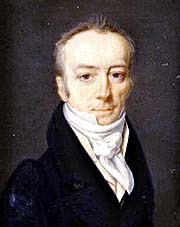 “Museum officials defend names” was the headline on the front page of the paper this morning. Wait until you hear their defense!
“Museum officials defend names” was the headline on the front page of the paper this morning. Wait until you hear their defense!
Kathleen Woith likes to remind people that the Smithsonian likely meant nothing to people when the name was first adopted.
Today, most people immediately recognize that name as synonymous with one of the world’s most prestigious museums. They’ve forgotten, or perhaps have never known, that it was named after James Smithson, the illegitimate son of a French baronet who never lived in the U.S. but supported its ideals.
And maybe museum officials have forgotten, or perhaps never known, that the reason it was named the Smithsonian Institution was because Smithson founded it with the money from his estate:
In 1826, James Smithson, a British scientist, drew up his last will and testament, naming his nephew as beneficiary. Smithson stipulated that, should the nephew die without heirs (as he would in 1835), the estate should go “to the United States of America, to found at Washington, under the name of the Smithsonian Institution, an establishment for the increase and diffusion of knowledge among men.â€
The estate was worth about $500,000. So, hypothetically, if someone named James Amaze wants to bequeath a half a million to Peoria for a multi-disciplinary museum with the stipulation that it be named the AMAZEum, I will have no quarrel with the name. You know why? Because then it would mean something.
That’s the reason Woith’s analogy doesn’t work. Whether or not people know who James Smithson was, the name nevertheless has intrinsic meaning. It identifies and memorializes the founder. In contrast, the names museum officials have presented are meaningless — not just to the uninformed, but in their very essence.
A more apt analogy would be to liken the naming to the Dada movement, “an early 20th-century international movement in art, literature, music, and film, repudiating and mocking artistic and social conventions and emphasizing the illogical and absurd.” (NOAD) In keeping with this philosophy, the name of the movement (Dada) was chosen randomly from a French dictionary.
Furthermore, Woith’s analogy, it seems to me, would bolster arguments to put Peoria in the name. Here was Smithson — an outcast because of his illegitimate birth in 19th century England — whose name is now revered because of this fine institution in Washington. Surely the name Peoria — whose only sin was that it didn’t “test well” in focus groups — can undergo a similar transformation if the museum is really going to be as unique and prestigious as museum officials claim.

I must have missed it – who did the museum backers engage to consult on the names? If they paid someone, how would it have looked for that paid consultant to recommend a name with something so mundane as “Peoria” featured in it? Usually consultants feel compelled to develop something unique and edgy. It is too logical to feature “Peoria” in the name.
Also, here is a chance to help boost Peoria’s image by featuring it in the name, assuming the museum will be the star attraction its backers say it will be. Another observation – Labelling something “regional” or a similar designation doesn’t make it so. The substance, contents, quality, etc., is what will make it regional, not the name.
In any event, I agree with those who believe that the success of the museum will depend very little if at all on what its official name is. The whole vote-for-the-name exercise is merely a way for the backers to get (free) public attention and “engage” the populace in something for which nearly everyone has an opinion.
Any branding/naming consultant worth his/her salt will tell you that having a public vote for a name is not a good way to go about it.
Since Cat is donating over $500,000… should it be called CATERPILLARum?
The museum ‘officials’ have been throwing money around [White Oaks, etc] since the beginning of this project. Sometime back, Lakeview ‘polled’ Peorians asking them what they would like to see displayed in museum. Most people said they would like to see more fine arts by noted artists, etc. Occassionaly dinosaurs and King Tut would come up. I discovered later that this Greater Peoria survey was restricted to Lakeview members only. Fine arts? Duh!
Point is….? More smoke screen crappola from Lakeview. Sorry for being such a cynic.
Well, $500,000 in the mid-1800s is equivalent to well over $10 million today. Nevertheless, I don’t dispute your point. They could call it the Owension Museum.
Well, they could have fun with the Caterpillarium, Caterpillarion, Caterpillazeum – by not using yellow and black, but actual caterpillars or butterflies or whatever.
A few other names came to mind, based on all those mayors: Maloofion ( I like all the o’s in there, funny), Greveseum. The Mayorium, Mayoraseum. Something kinda musical there.
Or use Peoria – Peorisphere. Peoriaseum. Peorexplorazeum. ExploraPeoriasphere.
This is kinda fun…whee!
I heard through the grapevine that Richarsoneum was one of the finalists before it was pared down to 4.
You are all taking this way too seriously!
I still think “CATastrophe” is a winner.
With contributions drying up they may have to sell naming rights to all the various components.
In which case it should be called Ad-nauseum
We could call it the Peoria Wax Museum. On display would be a wax likeness of all of Peoria’s famous people. The first one that always comes to mind is that foul-mouthed, good for nothing comedian who has always been an embarassment to Peoria……. Ray LaHood.
I agree C.J.- The name has to mean something, when you recieve a birthname it always means something, or it should. Nevertheless..the museum name has to have some kind of substance. I don’t like the names chosen…because, they have no meaning…good point..Smithson was a character I hear.